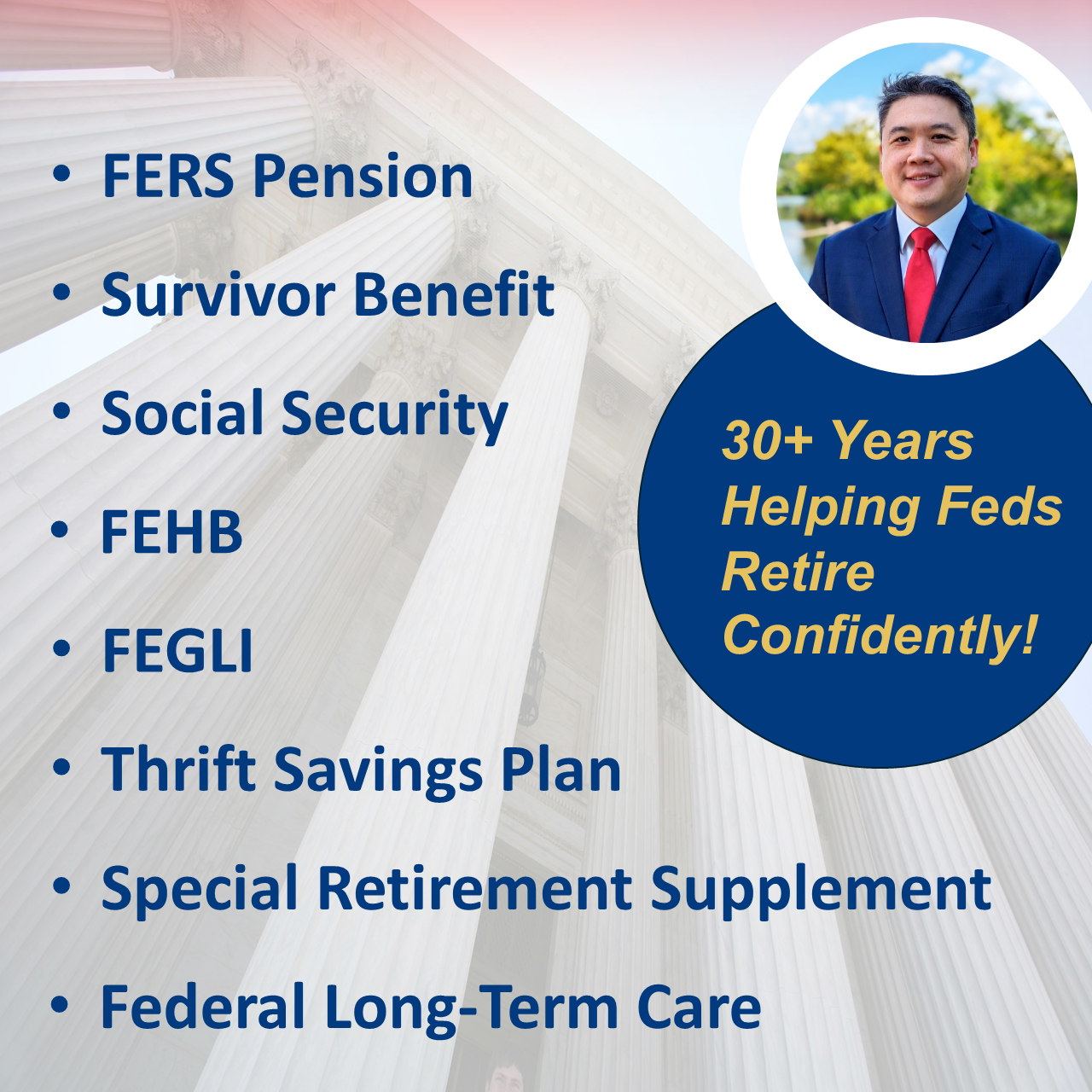Avoid federal retirement errors and common mistakes that can derail your future. Learn how to protect your retirement from costly investment errors.
Investing Mistakes to Avoid: Common Errors and Solutions for Federal Employees
After the recent tariffs rattled TSP funds, it is important to review the top mishaps federal employees make when managing their TSP plan. After discussing the current situation with PlanWell Advisors for Federal Employees, here is what we determined to be the biggest 4 mistakes a federal worker can make when it comes to investment management.
Try our Thrift Savings Plan Calculator to estimate your federal retirement income.
TSP Planner: Top Mistakes, 4 Thrift Savings Plan Missteps to Watch Out For
4. Relying Too Heavily on the C Fund in Down Markets
Here is the problem: with the TSP funds, the only way to invest in domestic stocks outside of the restrictive Mutual Fund Window is with the C and S funds. The C fund tracks the S&P 500 index (index of 500 common stocks) while the other tracks the Dow Jones US Completion Index, which is practically all US stocks that are not included in the 500 common stocks chosen for the S&P 500. There is no ability to target just growth equities, or just value stocks, or only small-cap companies… the choices are: the S&P 500 or, the rest of the domestic market… or some combination of both. Also, and this will most likely warrant its own article, the C fund is what has historically gotten pummeled in times of market uncertainty. Sure, it soars when volatility is low and economic factors are more positive, but as the ongoing tariff situation has revealed, the current White House might be prone to causing uncertainty in stock prices and a more chaotic economic environment… which is not a great sign for the C-Fund, which has performed quite well the previous two years.
3. Not Having a Solid Investing Strategy
Last week, the market saw a dramatic drop, an historic rise, and then another drop. Not knowing how to manage your investments can be beyond costly. If you panic and sell low, this can wipe considerable value from your future retirement savings. When the markets see a downturn for a couple days, the best thing to do is usually nothing… if super worried, it might be a good time to rebalance your TSP allocation, but selling shares of C and S funds and putting your whole balance in G could be a detrimental move. Having a Fed-Expert Financial Planner and Investment Advisor on your side can make a world of difference in achieving your investing goals for federal retirement. But basically, one of the biggest mistakes federal employees make is losing sight of long-term investing planning in an attempt to avoid losses in the short-term. Making an investment decision should not be done on a whim.
2. Misunderstanding the G Fund in Your Federal Investment Account
Many federal employees are under the misconception that the rate of return for the G Fund fluctuates similarly to fixed-income investments (like those available in the F Fund), but this is simply not the case and frequently leads to potential mistakes. Any qualified financial advisor should be able to tell you that stocks and bonds have an inverse relationship, meaning when the prices of stocks go up, the prices of bonds (fixed-income) goes down. One thing we want TSP investors to avoid is to think that there is a similar relationship between stock prices the G fund’s performance, because this is not the case. Just because the G fund is guaranteed to not provide a return less than zero, it does not necessarily mean it is a safe investment as it rarely keeps pace with inflation rates. Investing in a certain method without fully realizing the consequences can negatively impact new investors and even professional investors alike.
1. Common Investment Mistakes with TSP in Retirement: Pro Rata Withdrawals
The pro rata withdraw rule that involved how much TSP money could be taken from traditional vs. Roth accounts has been phased out. Retirees and employees making in-service withdrawals can now pick how much they want from either Roth TSP or Traditional TSP account sources. When it comes to picking which of the TSP core funds you want to withdraw from when making an in-retirement withdrawal, the federal savings plan does not allow for this. The withdrawal will be taken proportionately from each of the fund you’re invested in.
Example of Pro-Rata TSP Withdrawal
| Beginning Balance | Portion of TSP Account | Amount of Withdraw | Ending Balance | |
| TSP Total | $100,000 | 100% | -$10,000 | $90,000 |
| C Fund | $50,000 | 50% | -$5,000 | $45,000 |
| S Fund | $30,000 | 30% | -$3,000 | $27,000 |
| G Fund | $20,000 | 20% | -$2,000 | $18,000 |
*the above chart is not a recommendation, but a hypothetical illustration of a pro-rata TSP withdrawal
The inability to select from which sources withdrawal funds come is a significance hinderance on one’s investment strategy. Some market conditions dictate how much money should should taken from particular sectors of the market. Not being able to make this distinction can cause a significant loss of principal if not managed correctly.
Need to retire from the government? Register for a Federal Retirement Webinar.
What Are the Most Common Investing Mistakes Federal Employees Make?
Why Is Trying to Time the Market a Risky Strategy?
Trying to time the market is another frequent mistake that can lead to poor investment decisions. Many investors believe they can predict market movements and buy or sell stocks at the perfect moment. However, the stock market is inherently unpredictable, and attempting to time it often results in missed opportunities and increased losses. Instead of trying to time the market, federal employees should focus on long-term investment strategies that align with their financial goals and risk tolerance. This approach helps in achieving consistent returns over time without the stress of market timing.
How Can Federal Employees Diversify Their Investment Portfolio?
What Role Does Asset Allocation Play in Diversification?
Asset allocation is a fundamental component of diversification and involves distributing investments across different asset classes, such as stocks, bonds, and mutual funds. For federal employees, asset allocation helps balance risk and reward by adjusting the proportion of each asset class in their portfolio. A well-thought-out asset allocation strategy considers factors like risk tolerance, time horizon, and investment goals. By diversifying through asset allocation, federal employees can protect their investments from market volatility and enhance their potential for long-term growth.
Why Is Consulting a Financial Advisor Important for Federal Employees?
How Can Tax Advice from a Financial Advisor Benefit Your Investments?
Tax advice is a critical aspect of investment planning that can significantly impact an investor’s net returns. A financial advisor can help federal employees navigate complex tax regulations and identify strategies to minimize tax liabilities. This includes optimizing retirement accounts, such as the TSP, and making tax-efficient investment decisions. By incorporating tax advice into their financial plan, federal employees can enhance their investment returns and preserve more of their wealth for future needs.
What Are the Risks of Ignoring Past Performance in Investment Decisions?
How Can Past Performance Influence Future Investment Returns?
While past performance is no guarantee of future results, it can provide valuable insights into an investment’s potential. Ignoring past performance can lead to misguided investment decisions, as historical data often highlights trends and patterns that may influence future returns. Federal employees should analyze past performance to assess the consistency and reliability of an investment product. However, it’s crucial to consider other factors, such as market conditions and economic indicators, when making investment decisions.
Reach Out to Us!
If you have additional federal benefit questions, contact our team of CERTIFIED FINANCIAL PLANNER™ (CFP®) and Chartered Federal Employee Benefits Consultants (ChFEBC℠). We also hold the Accredited Investment Fiduciary (AIF®) designation. At PlanWell, we are federal employee financial advisors with a focus on retirement planning. Learn more about our process designed for the career fed.
Preparing for federal retirement? Check out our scheduled federal retirement workshops. Sign up for our no-cost federal retirement webinars using helpful online training. Make sure to plan ahead and reserve your seat for our FERS webinar, held every three weeks. Want to have PlanWell host a federal retirement seminar for your agency? Reach out, and we’ll collaborate with HR to arrange an on-site FERS seminar.
Want to fast-track your federal retirement plan? Skip the FERS webinar and start a one-on-one conversation with a ChFEBC today. You can schedule a one-on-one meeting through our online form.










